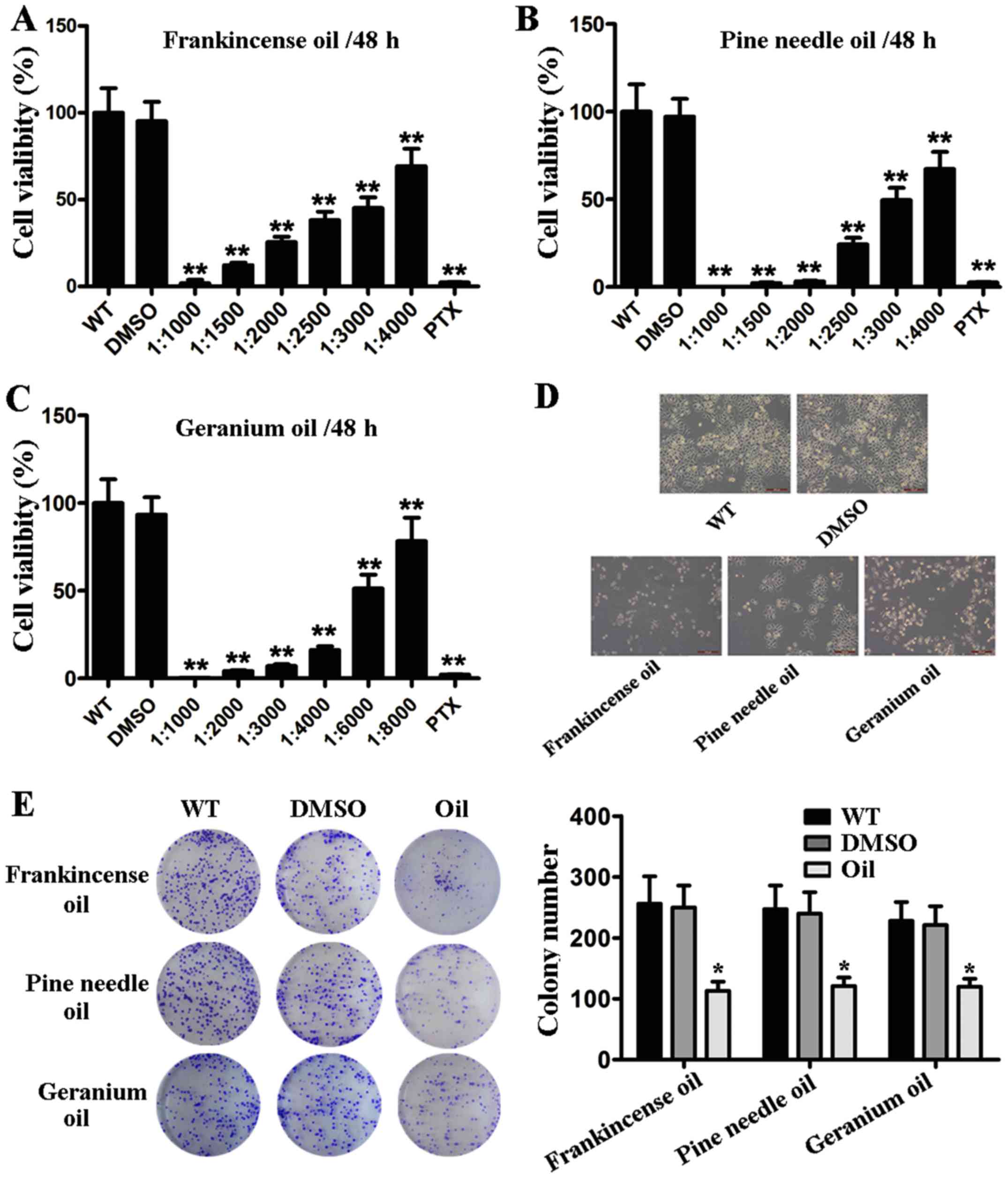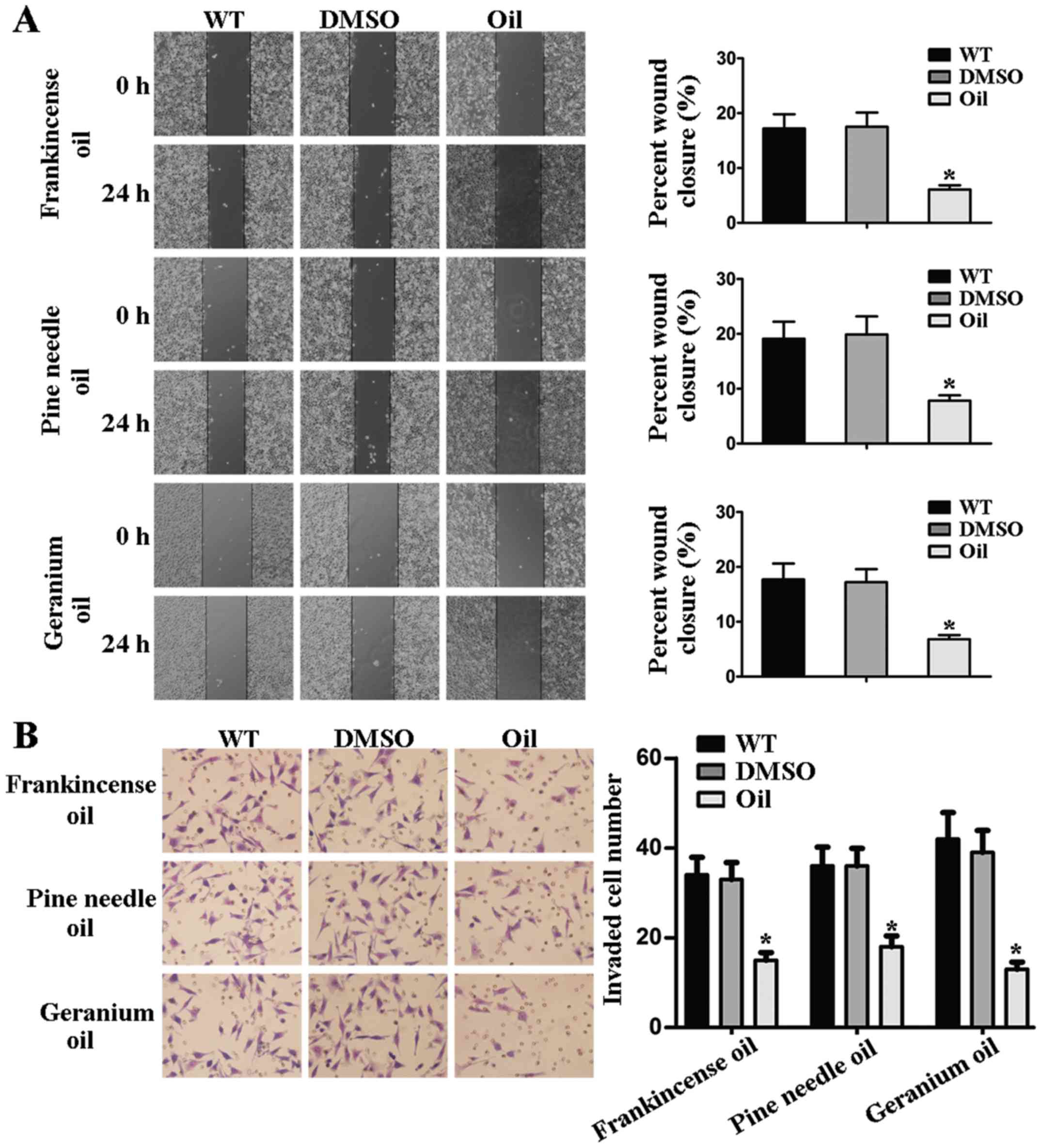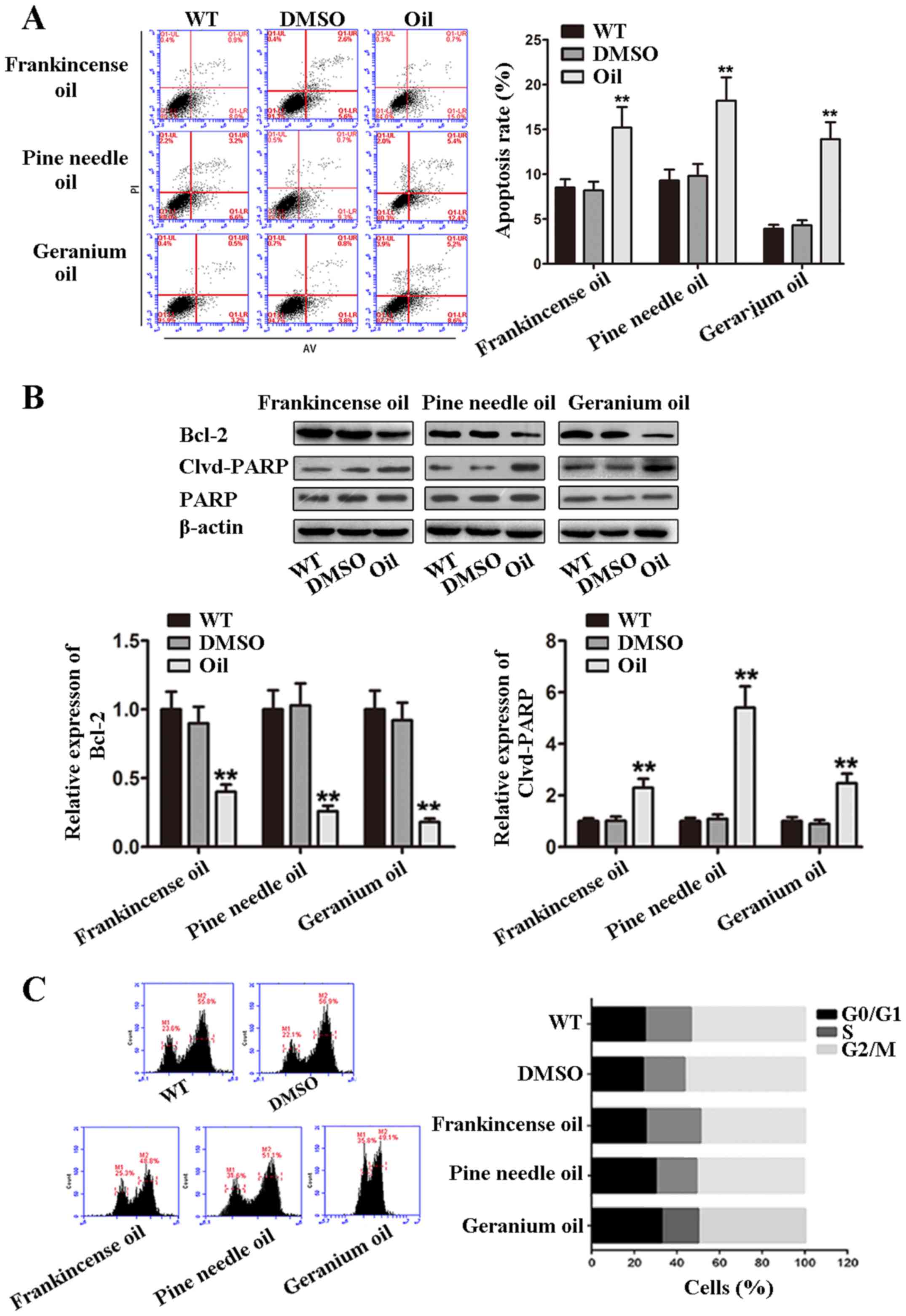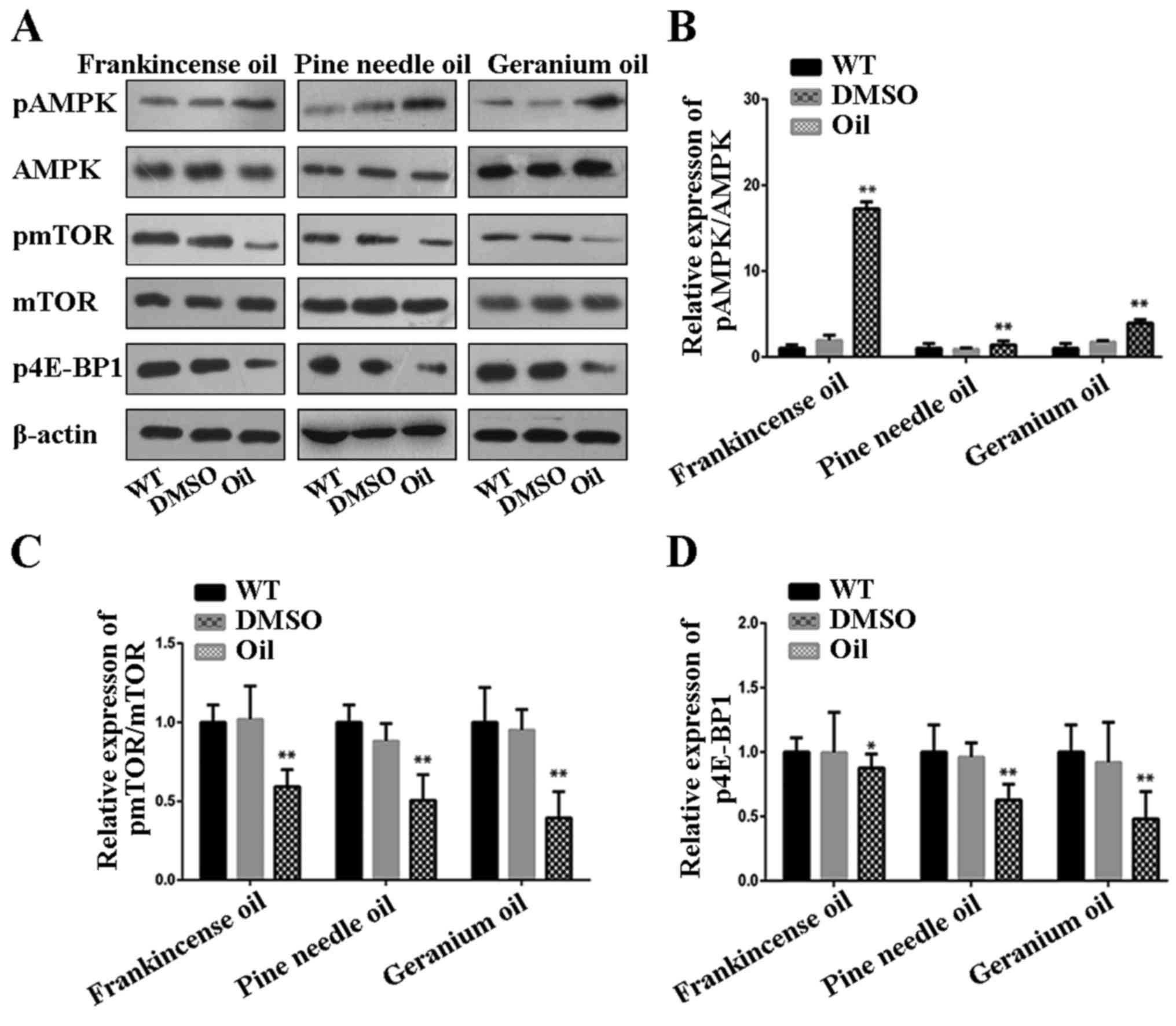|
1
|
Rahimi Z, Yari K and Rahimi Z: Matrix
metalloproteinase-9 −1562T allele and its combination with MMP-2
−735 C allele are risk factors for BC. Asian Pac J Cancer Prev.
16:1175–1179. 2015. View Article : Google Scholar : PubMed/NCBI
|
|
2
|
Fox P, Balleine RL, Lee C, Gao B,
Balakrishnar B, Menzies AM, Yeap SH, Ali SS, Gebski V, Provan P, et
al: Dose escalation of tamoxifen in patients with low endoxifen
level: Evidence for therapeutic drug monitoring - The TADE study.
Clin Cancer Res. 22:3164–3171. 2016. View Article : Google Scholar : PubMed/NCBI
|
|
3
|
Sabol M, Trnski D, Uzarevic Z, Ozretic P,
Musani V, Rafaj M, Cindric M and Levanat S: Combination of
cyclopamine and tamoxifen promotes survival and migration of mcf-7
BC cells - interaction of hedgehog-gli and estrogen receptor
signaling pathways. PLoS One. 9:e1145102014. View Article : Google Scholar : PubMed/NCBI
|
|
4
|
Poeckel D and Werz O: Boswellic acids:
Biological actions and molecular targets. Curr Med Chem.
13:3359–3369. 2006. View Article : Google Scholar : PubMed/NCBI
|
|
5
|
Ammon HP: Boswellic acids in chronic
inflammatory diseases. Planta Med. 72:1100–1116. 2006. View Article : Google Scholar : PubMed/NCBI
|
|
6
|
Syrovets T, Büchele B, Krauss C,
Laumonnier Y and Simmet T: Acetyl-boswellic acids inhibit
lipopolysaccharide-mediated TNF-alpha induction in monocytes by
direct interaction with IkappaB kinases. J Immunol. 174:498–506.
2005. View Article : Google Scholar : PubMed/NCBI
|
|
7
|
Büchele B and Simmet T: Analysis of 12
different pentacyclic triterpenic acids from frankincense in human
plasma by high-performance liquid chromatography and photodiode
array detection. J Chromatogr B Analyt Technol Biomed Life Sci.
795:355–362. 2003. View Article : Google Scholar : PubMed/NCBI
|
|
8
|
Siemoneit U, Pergola C, Jazzar B, Northoff
H, Skarke C, Jauch J and Werz O: On the interference of boswellic
acids with 5-lipoxygenase: Mechanistic studies in vitro and
pharmacological relevance. Eur J Pharmacol. 606:246–254. 2009.
View Article : Google Scholar : PubMed/NCBI
|
|
9
|
Burdine L and Kodadek T: Target
identification in chemical genetics: The (often) missing link. Chem
Biol. 11:593–597. 2004. View Article : Google Scholar : PubMed/NCBI
|
|
10
|
Kwak CS, Moon SC and Lee MS: Antioxidant,
antimutagenic, and antitumor effects of pine needles (Pinus
densiflora). Nutr Cancer. 56:162–171. 2006. View Article : Google Scholar : PubMed/NCBI
|
|
11
|
Jeong JB, Seo EW and Jeong HJ: Effect of
extracts from pine needle against oxidative DNA damage and
apoptosis induced by hydroxyl radical via antioxidant activity.
Food Chem Toxicol. 47:2135–2141. 2009. View Article : Google Scholar : PubMed/NCBI
|
|
12
|
Lis-Balchin M and Deans SG: Antimicrobial
effects of hydrophilic extracts of Pelargonium species
(Geraniaceae). Lett Appl Microbiol. 23:205–207. 1996. View Article : Google Scholar : PubMed/NCBI
|
|
13
|
Ben Slima A, Ali MB, Barkallah M, Traore
AI, Boudawara T, Allouche N and Gdoura R: Antioxidant properties of
Pelargonium graveolens L'Her essential oil on the reproductive
damage induced by deltamethrin in mice as compared to
alpha-tocopherol. Lipids Health Dis. 12:302013. View Article : Google Scholar : PubMed/NCBI
|
|
14
|
Boukhatem MN, Kameli A, Ferhat MA, Saidi F
and Mekarnia M: Rose geranium essential oil as a source of new and
safe anti-inflammatory drugs. Libyan J Med. 8:225202013. View Article : Google Scholar : PubMed/NCBI
|
|
15
|
Shim JU, Oh PS and Lim KT:
Anti-inflammatory activity of ethanol extract from Geranium
sibiricum Linne. J Ethnopharmacol. 126:90–95. 2009. View Article : Google Scholar : PubMed/NCBI
|
|
16
|
Singla AK, Bondareva A and Jirik FR:
Combined treatment with paclitaxel and suramin prevents the
development of metastasis by inhibiting metastatic colonization of
circulating tumor cells. Clin Exp Metastasis. 31:705–714. 2014.
View Article : Google Scholar : PubMed/NCBI
|
|
17
|
Ni X, Suhail MM, Yang Q, Cao A, Fung KM,
Postier RG, Woolley C, Young G, Zhang J and Lin HK: Frankincense
essential oil prepared from hydrodistillation of Boswellia sacra
gum resins induces human pancreatic cancer cell death in cultures
and in a xenograft murine model. BMC Complement Altern Med.
12:2532012. View Article : Google Scholar : PubMed/NCBI
|
|
18
|
Satoh MS and Lindahl T: Role of
poly(ADP-ribose) formation in DNA repair. Nature. 356:356–358.
1992. View
Article : Google Scholar : PubMed/NCBI
|
|
19
|
Kim EJ, Choi YK, Han YH, Kim HJ, Lee IK
and Lee MO: RORα suppresses proliferation of vascular smooth muscle
cells through activation of AMP-activated protein kinase. Int J
Cardiol. 175:515–521. 2014. View Article : Google Scholar : PubMed/NCBI
|
|
20
|
Laplante M and Sabatini DM: mTOR signaling
in growth control and disease. Cell. 149:274–293. 2012. View Article : Google Scholar : PubMed/NCBI
|
|
21
|
Wu M, Li T, Chen L, Peng S, Liao W, Bai R,
Zhao X, Yang H, Wu C, Zeng H, et al: Essential oils from Inula
japonica and Angelicae dahuricae enhance sensitivity of MCF-7/ADR
BC cells to doxorubicin via multiple mechanisms. J Ethnopharmacol.
180:18–27. 2016. View Article : Google Scholar : PubMed/NCBI
|
|
22
|
Kumar D, Sukapaka M, Babu GD and Padwad Y:
Chemical composition and in vitro cytotoxicity of essential oils
from leaves and flowers of Callistemon citrinus from western
Himalayas. PLoS One. 10:e01338232015. View Article : Google Scholar : PubMed/NCBI
|
|
23
|
Wilson AJ, Saskowski J, Barham W, Khabele
D and Yull F: Microenvironmental effects limit efficacy of
thymoquinone treatment in a mouse model of ovarian cancer. Mol
Cancer. 14:1922015. View Article : Google Scholar : PubMed/NCBI
|
|
24
|
Parbin S, Shilpi A, Kar S, Pradhan N,
Sengupta D, Deb M, Rath SK and Patra SK: Insights into the
molecular interactions of thymoquinone with histone deacetylase:
Evaluation of the therapeutic intervention potential against BC.
Mol Biosyst. 12:48–58. 2016. View Article : Google Scholar : PubMed/NCBI
|
|
25
|
Ke X, Zhao Y, Lu X, Wang Z, Liu Y, Ren M,
Lu G, Zhang D, Sun Z, Xu Z, et al: TQ inhibits hepatocellular
carcinoma growth in vitro and in vivo via repression of Notch
signaling. Oncotarget. 6:32610–32621. 2015. View Article : Google Scholar : PubMed/NCBI
|
|
26
|
Park YS, Lee JH, Bondar J, Harwalkar JA,
Safayhi H and Golubic M: Cytotoxic action of
acetyl-11-keto-beta-boswellic acid (AKBA) on meningioma cells.
Planta Med. 68:397–401. 2002. View Article : Google Scholar : PubMed/NCBI
|
|
27
|
Shao Y, Ho CT, Chin CK, Badmaev V, Ma W
and Huang MT: Inhibitory activity of boswellic acids from Boswellia
serrata against human leukemia HL-60 cells in culture. Planta Med.
64:328–331. 1998. View Article : Google Scholar : PubMed/NCBI
|
|
28
|
Liu JJ, Nilsson A, Oredsson S, Badmaev V
and Duan RD: Keto- and acetyl-keto-boswellic acids inhibit
proliferation and induce apoptosis in Hep G2 cells via a caspase-8
dependent pathway. Int J Mol Med. 10:501–505. 2002.PubMed/NCBI
|
|
29
|
Zhao W, Entschladen F, Liu H, Niggemann B,
Fang Q, Zaenker KS and Han R: Boswellic acid acetate induces
differentiation and apoptosis in highly metastatic melanoma and
fibrosarcoma cells. Cancer Detect Prev. 27:67–75. 2003. View Article : Google Scholar : PubMed/NCBI
|
|
30
|
Liu JJ, Nilsson A, Oredsson S, Badmaev V,
Zhao WZ and Duan RD: Boswellic acids trigger apoptosis via a
pathway dependent on caspase-8 activation but independent on
Fas/Fas ligand interaction in colon cancer HT-29 cells.
Carcinogenesis. 23:2087–2093. 2002. View Article : Google Scholar : PubMed/NCBI
|
|
31
|
Pang X, Yi Z, Zhang X, Sung B, Qu W, Lian
X, Aggarwal BB and Liu M: Acetyl-11-keto-beta-boswellic acid
inhibits prostate tumor growth by suppressing vascular endothelial
growth factor receptor 2-mediated angiogenesis. Cancer Res.
69:5893–5900. 2009. View Article : Google Scholar : PubMed/NCBI
|
|
32
|
Lu M, Xia L, Hua H and Jing Y:
Acetyl-keto-beta-boswellic acid induces apoptosis through a death
receptor 5-mediated pathway in prostate cancer cells. Cancer Res.
68:1180–1186. 2008. View Article : Google Scholar : PubMed/NCBI
|
|
33
|
Syrovets T, Gschwend JE, Büchele B,
Laumonnier Y, Zugmaier W, Genze F and Simmet T: Inhibition of
IkappaB kinase activity by acetyl-boswellic acids promotes
apoptosis in androgen-independent PC-3 prostate cancer cells in
vitro and in vivo. J Biol Chem. 280:6170–6180. 2005. View Article : Google Scholar : PubMed/NCBI
|
|
34
|
Frank MB, Yang Q, Osban J, Azzarello JT,
Saban MR, Saban R, Ashley RA, Welter JC, Fung KM and Lin HK:
Frankincense oil derived from Boswellia carteri induces tumor cell
specific cytotoxicity. BMC Complement Altern Med. 9:62009.
View Article : Google Scholar : PubMed/NCBI
|
|
35
|
Suhail MM, Wu W, Cao A, Mondalek FG, Fung
KM, Shih PT, Fang YT, Woolley C, Young G and Lin HK: Boswellia
sacra essential oil induces tumor cell-specific apoptosis and
suppresses tumor aggressiveness in cultured human BC cells. BMC
Complement Altern Med. 11:1292011. View Article : Google Scholar : PubMed/NCBI
|
|
36
|
Jin HO, Hong SE, Woo SH, Lee JH, Choe TB,
Kim EK, Noh WC, Lee JK, Hong SI, Kim JI, et al: Silencing of Twist1
sensitizes NSCLC cells to cisplatin via AMPK-activated mTOR
inhibition. Cell Death Dis. 3:e3192012. View Article : Google Scholar : PubMed/NCBI
|
|
37
|
Inoki K, Corradetti MN and Guan KL:
Dysregulation of the TSC-mTOR pathway in human disease. Nat Genet.
37:19–24. 2005. View
Article : Google Scholar : PubMed/NCBI
|
|
38
|
Pezze P Dalle, Ruf S, Sonntag AG,
Langelaar-Makkinje M, Hall P, Heberle AM, Navas P Razquin, van
Eunen K, Tölle RC, Schwarz JJ, et al: A systems study reveals
concurrent activation of AMPK and mTOR by amino acids. Nat Commun.
7:132542016. View Article : Google Scholar : PubMed/NCBI
|
|
39
|
Polak P and Hall MN: mTOR and the control
of whole body metabolism. Curr Opin Cell Biol. 21:209–218. 2009.
View Article : Google Scholar : PubMed/NCBI
|
|
40
|
Henry WS, Laszewski T, Tsang T, Beca F,
Beck AH, McAllister SS and Toker A: Aspirin suppresses growth in
PI3K-mutant BC by activating AMPK and inhibiting mTORC1 signaling.
Cancer Res. 77:790–801. 2017. View Article : Google Scholar : PubMed/NCBI
|
|
41
|
Lipovka Y, Chen H, Vagner J, Price TJ,
Tsao TS and Konhilas JP: Oestrogen receptors interact with the
α-catalytic subunit of AMP-activated protein kinase. Biosci Rep.
35:e002642015. View Article : Google Scholar : PubMed/NCBI
|
|
42
|
Liu P, Ye F and Xie X, Li X, Tang H, Li S,
Huang X, Song C, Wei W and Xie X: mir-101-3p is a key regulator of
tumor metabolism in triple negative BC targeting AMPK. Oncotarget.
7:35188–35198. 2016. View Article : Google Scholar : PubMed/NCBI
|















